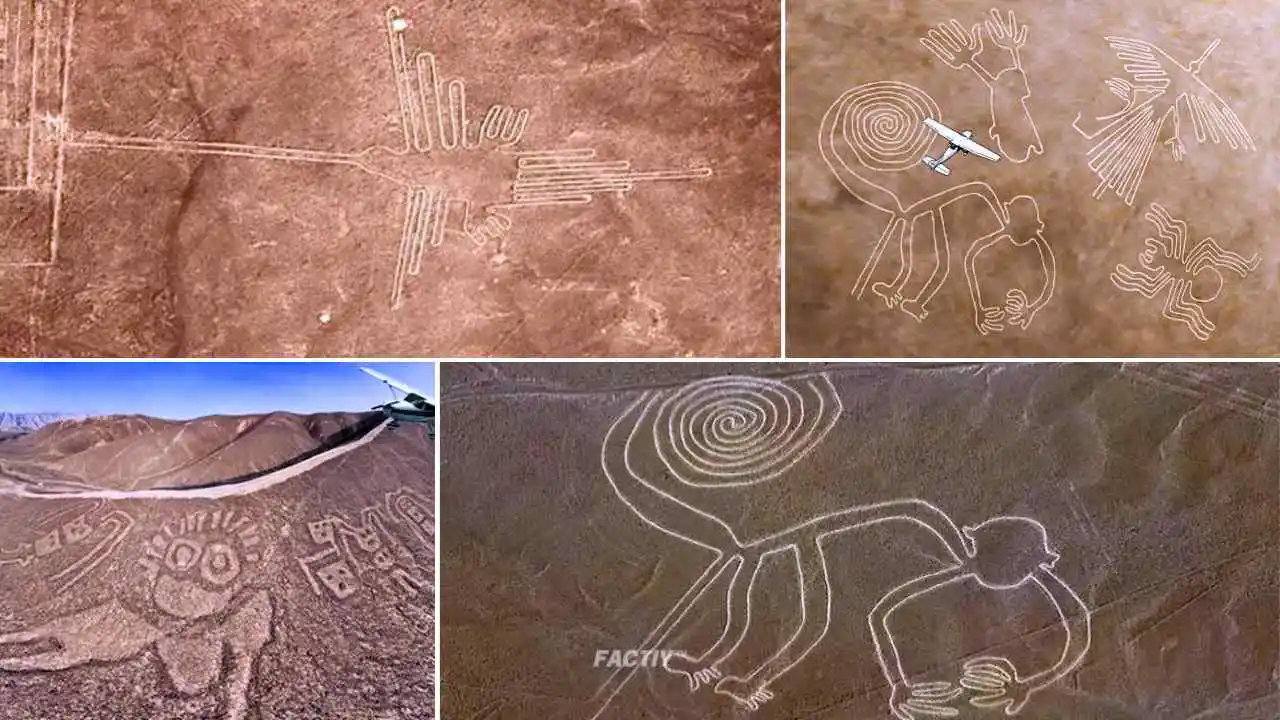The world famous Nazca Lines are in Peru, a small country in the South American continent. In fact, the Nazca Lines, carved into the arid landscape of the Nazca Desert in southern Peru, are one of the most mysterious and awe-inspiring creations of ancient civilizations. These huge geoglyphs, spread over approximately 450 square kilometers, have puzzled researchers and for decades the public has been curious to know for what purpose they might have been created. The Nazca Lines were created by people living in the Nazca Desert between 200 BC and 600 AD. These lines continue to amaze experts with their enormous size and intricate designs. So friends, through this article we will tell you about Nazca Lines Unveiled: Mystery Behind the Ancient Nazca Lines.
Why Nazca Lines so mysterious?

The Nazca Lines are a series of giant drawings carved into the earth that are mysterious, filling archaeologists, historians and the general public with curiosity. The sheer size and accuracy of these geoglyphs astounds historians. These lines are very long, some of which extend for more than a thousand feet. What techniques might the ancient Nazca people have used to create these, how they achieved such precision without the aid of modern tools, and what inspired them to create these intricate designs on such a large scale.
[adsense_big123_code]
The mystery deepens when it is revealed that the geoglyphs can only be seen from an aerial perspective, revealing the technological capabilities of the civilization that created them. Despite various theories proposing religious, astronomical or practical functions, a definitive explanation remains elusive as to what makes the Nazca Lines special.
It will be easier to determine why they were created than to determine how they were created. Scholars have theorized that the Nazca people used simple tools and surveying to construct the lines. Archaeological surveys have finally found some wooden pillars in the ground, which supports this theory. Also, an attempt was made to find out the age of Nazca Lines through a carbon-dated method which failed.
Maria Reich claimed that all the figures represented constellations. By 1998, Phyllis B. Pitaluga, a disciple of Reich and senior astronomer at Chicago’s Adler Planetarium, had concluded that the animal figures were ‘representations of heavenly figures’.
Suggested Read : Unveiling The Fingerprint Island: Explore Baljenac Island’s Secrets
Brief history of The Nazca Lines
The Nazca Lines have their origins within the Nazca culture, a pre-Inca civilization that flourished in the region from approximately 200 BCE to 600 CE. In an environment with arid conditions, the Nazca people developed a complex underground drainage system to channel water for agricultural purposes.
The lines are generally 4-6 inches deep. These were created by removing the top layer of reddish-brown iron oxide-coated pebbles to reveal a yellow-brown subsoil. The width of the lines varies considerably, but more than half are a little more than 13 inches wide. In some places they may be only 12 inches wide, and in others can reach up to 6 feet wide.
People living in the Nazca Desert created hundreds of simple lines and geometric shapes that contain more than 70 zoomorphic designs, including a hummingbird, spider, fish, condor, heron, monkey, lizard, dog, cat, and a human. Other shapes include trees and flowers. It is difficult to tell for what purpose these designs were created.
Several theories have emerged to explain the purpose of the Nazca Lines. Some consider religious significance, suggesting that the geoglyphs were used as sites for ceremonial rituals or routes for sacred processions. Some historians link it to astronomical connections, proposing that the lines may represent celestial constellations or function as an ancient calendar system.
Archaeoastronomy experts Gerald Hawking and Anthony Aveni concluded in 1990 that the evidence was insufficient to support any astronomical interpretation.
[adsense_big123_code]
Conclusion
As we stand on the brink of understanding ancient civilizations, the Nazca Lines continue to elude definitive interpretation. The enduring mystery surrounding their creation, purpose and cultural significance creates a sense of wonder and fascination. Despite the limitations of their technological resources, the Nazca people left an indelible mark on the landscape, inspiring us to contemplate the complexities of human ingenuity.
The preservation of the Nazca Lines, facilitated by the unique climate of the Nazca Desert, adds to their attraction. The Nazca Lines stand as a testament to the enduring mysteries of human history, inspiring us to explore, question, and marvel at those wonders.
So friends, as the sun sets over the Nazca Desert, these beautiful paintings made in the sand of this desert try to bathe in the golden light of the evening. So today we revealed some new secrets about this Nazca Lines and Nazca Lines Unveiled: Mystery Behind the Ancient Nazca Lines. We hope that the information given by us will be useful to you. keep reading…………! keep smiling…………!
Now you can also send us by writing a blog. to send click here
You can also purchase this product.
[aft_ads_code]


